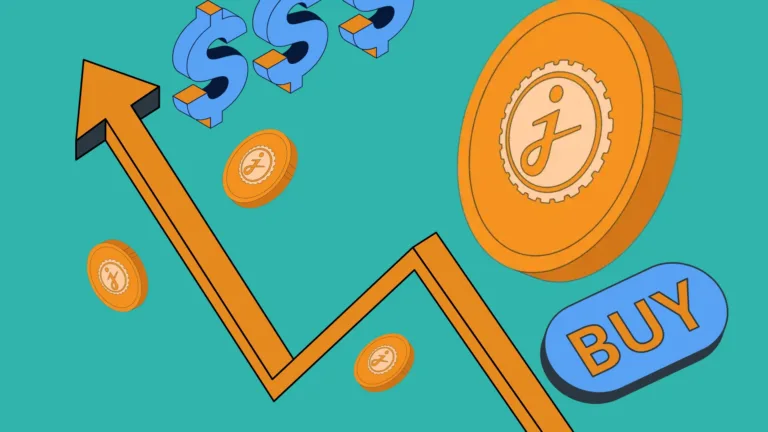Is Solana better than Polygon?
Is Solana better than Polygon? In short, Solana (SOL) leads in throughput, validator count, and fee revenue, but wrestles with past outages and regulatory uncertainty. Polygon’s POL token powers a multi-chain, Ethereum-aligned ecosystem with predictable emissions and cheaper fees, though it relies on fewer validators and has faced critical bridge issues.
Key Takeaways:
Hide- Throughput & Finality: Solana offers ~65,000 TPS with 400 ms finality; Cardano averages <300 TPS, prioritizing audited upgrades over raw speed.
- Network Activity: SOL consistently clears 100M+ daily transactions and over 2M active wallets; ADA handles ~80k tx/day with ~1M staking wallets.
- Staking Yields: Solana provides ~6.5–7.5% APR from protocol fees and MEV; Cardano yields 3–3.5%, backed by a predictable reserve drawdown.
- Validator Network: Solana’s ~2,000 validators boost performance but still face halts; Cardano has ~3,000 pools and no chain-wide outages.
- Supply Design: ADA is hard-capped at 45B with slow emission decay; SOL has no cap but its inflation auto-decays toward a 1.5% floor.
- Fee Models: Solana burns 50% of priority fees; Cardano uses fixed-formula fees routed to its treasury.
- Governance: Cardano implements on-chain governance (CIP-1694); Solana follows off-chain consensus with validator-weighted input.
- Ecosystem Focus: Solana leads in DeFi and NFT volume; Cardano grows through Catalyst funding, stablecoins, and identity frameworks.
- Risk & Stability: Solana has suffered major outages despite decentralization; Cardano maintains consistent uptime with rigorous peer review.
- Regulatory Standing: Both tokens were flagged by the SEC in 2023; clarity is improving, but ETF approval is still pending for both.
Is Solana Gaining More Momentum Than Polygon?

Is Solana’s surging throughput and DeFi revival outpacing Polygon (POL) multi-chain expansion and low-fee appeal? Can Solana (SOL) validator growth and fee revenues overshadow POL’s Ethereum-aligned scalability and restaking innovations? What’s your read on who’s building real momentum?
1. Market Metrics
| Metric | SOL | POL |
|---|---|---|
| Spot price (7 Jul 2025) | $147–149 | $0.18–0.19 |
| Circulating m-cap | ≈ $79 B | ≈ $1.9 B (migration still under way) |
| 24 h volume | $1.7–5 B | ≈ $0.12 B |
Liquidity: Both assets trade with healthy depth—SOL’s absolute liquidity is ~40× larger, while POL’s vol/cap ratio (≈ 6 %) tops SOL’s 3–4 %, signalling brisk turnover for its size.
Those liquidity nuances feed directly into Polygon price 2025, which unpacks how upcoming upgrades and tokenomics shifts could shape POL’s trajectory through mid-2025.
2. Supply Dynamics
- Solana minted at genesis with 8 % initial inflation that auto-decays 15 % y/y toward a 1.5 % floor; current net issuance is ~4.7 % on a 587 M supply.
- POL is a 1-for-1 swap from 10 B MATIC, plus 2 % new POL minted annually for 10 years (1 % to stakers, 1 % to a treasury) per the Polygon 2.0 tokenomics proposal.
- Contrast: SOL dilution shrinks indefinitely but never hits zero; POL adds a predictable 2 % “tail” that governance may revise once the decade-long schedule ends.
3. Consensus Mechanism & Security
| Feature | Solana | Polygon PoS |
|---|---|---|
| Core algorithm | Proof-of-Stake + Proof-of-History | Heimdall/Bor PoS (Tendermint-style) |
| Active validators | ≈ 1 875 main-net nodes | ~ 105 slots (expanding to 125) |
| Finality | ~ 0.4 s | ~ 2 s |
| Notable L1 incidents | 5-hour halt on 6 Feb 2024 | $1.8 M bridge bug (Dec 2021) patched before loss |
Solana’s larger validator set gives it a higher Nakamoto coefficient, but downtime remains its reputational risk; Polygon’s smaller, capped set eases coordination at the cost of concentration.
4. Network Activity
- Throughput (sustained): Solana averages 4 000–5 000 TPS in production, while Polygon PoS peaks around 700 TPS with 8–10 M daily-tx bursts.
- Daily transactions: SOL hit a record 111.2 M tx on 25 Jun 2025; Polygon’s ATH is 10.3 M (16 Feb 2025).
- Active addresses: Solana ~ 2.2 M DAAs in March highs; Polygon PoS ~ 1.23 M at February peak.
- Fees: Solana’s micro base-fee plus surge priority fees (now > 97 % of revenue) go to validators; Polygon burns sub-$0.01 gas while new POL inflation funds security.
5. Development & Ecosystem
- GitHub:
solana-labs/solana13.6 k★ / 488 contributors vs many scattered Polygon repos;heimdallshows 63 contributors but is just one core module. - Roadmap highlights
- Solana — “Alpenglow” consensus overhaul promises instant finality; RFC published May 2025.
- Polygon — “enshrined restaking” and multi-chain AggLayer, live on test-net June 2025.
- dApp traction: Solana leads 2025 DEX/NFT volume; Polygon anchors Ethereum gaming titles and early zkEVM traffic.
6. Tokenomics & Utility
| Aspect | SOL | POL |
|---|---|---|
| Native roles | Gas, rent, MEV tips, staking | Gas across PoS, zkEVM, future supernets; restaking collateral |
| Staking yield | ≈ 6.5–7.5 % APR | ≈ 4–5 % APR base, plus restaking boosts |
| Governance | SIMD proposals, stake-weighted vote | Token voting on PIPs + 13-seat Protocol Council veto |
POL introduces multi-chain yield without rehypothecation risk, while SOL rewards scale directly with network MEV.
7. Team, Community & Governance
- Founders: Anatoly Yakovenko & Raj Gokal for Solana; Jaynti Kanani, Sandeep Nailwal et al. for Polygon.
- Followers: Solana’s X handle ≈ 2.5 M, Polygon ≈ 1.7 M.
- Community sentiment: SOL “Very Bullish” vs POL Neutral-Bullish.
8. Regulatory & Compliance
The SEC’s 2023 Coinbase/Binance actions listed both SOL and MATIC (now POL) as “crypto-asset securities.” Although the agency withdrew a request for summary judgment in mid-2024, the label still hangs over both ecosystems. Neither asset yet enjoys spot-ETF approval like BTC/ETH.
9. Ecosystem Risk Factors
| Risk | Solana | Polygon |
|---|---|---|
| Network stability | Multiple full-cluster halts; latest Feb 2024 | No L1 halts; PoS bridge bug patched, $1.8 M loss |
| Validator concentration | Top-30 ≈ < 34 % stake | Top-5 > 45 % stake (May 2025 report) |
| Bridge/oracle reliance | Wormhole/Allbridge; $320 M Wormhole hack 2022 | Heimdall bridge inherits Ethereum security but remains a single critical path |
10. Macro & Sentiment Indicators
- BTC correlation (90-day): SOL ≈ 0.63; POL ≈ 0.48.
- On-chain revenue: Solana captured ~ 259 700 SOL (~ $38 M) in priority fees over the last 30 days; Polygon burns < $0.3 M equivalent, subsidising security with new POL issuance.
- Social buzz: Solana regularly tops engagement leaderboards, while POL fluctuations track Ethereum Layer-2 narratives rather than broad crypto-beta surges.
Solana or Polygon: Which Ecosystem Is Growing Faster?
Solana offers unrivalled single-chain throughput and fee capture; Polygon offers an Ethereum-aligned, multi-chain design with predictable, low fees.
SOL’s declining inflation plus MEV tips create strong validator incentives; POL’s 2 % tail funds both security and a community treasury, with optional restaking rewards.
Solana’s validator breadth hasn’t eliminated outages; Polygon’s smaller validator set raises centralisation worries despite better uptime.
Both tokens still face SEC scrutiny, but no direct enforcement beyond naming. Institutional liquidity could expand rapidly if clarity (or ETF approval) emerges.







